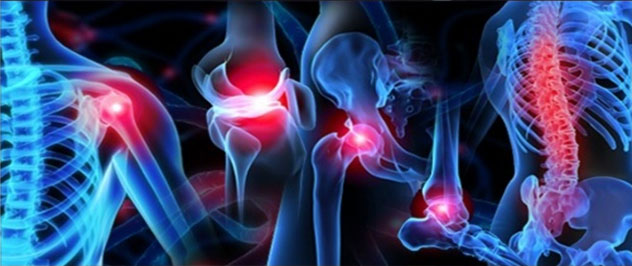Pelvic and Complex Trauma

Pelvic and complex trauma refer to injuries involving the pelvic region and surrounding structures that are often severe and may involve multiple systems. These traumas can result from high-impact accidents such as motor vehicle collisions or falls from significant heights. Pelvic trauma may include fractures of the pelvic bones, injuries to surrounding blood vessels, and damage to nearby organs. Managing pelvic and complex trauma requires a multidisciplinary approach involving trauma surgeons, orthopedic surgeons, and other specialists to address the complexity and potential complications associated with these injuries.
Conditions of Pelvic and Complex Trauma
Pelvic and complex trauma refer to injuries involving the pelvic region and other adjacent structures. Common conditions include fractures of the pelvic bones, injuries to pelvic organs, and damage to surrounding blood vessels and nerves. These traumas often result from high-impact accidents, such as falls, motor vehicle collisions, or crush injuries. Symptoms may include pain, swelling, difficulty walking, and potential complications affecting internal organs. Treatment involves a comprehensive assessment, imaging studies, and may require surgical intervention for stabilization and repair. Early medical attention is crucial for optimal outcomes.
Why it's done
Pelvic and complex trauma surgeries are performed to address severe injuries and fractures involving the pelvic region. These procedures are necessary when trauma, such as high-impact accidents or falls, results in complex fractures, dislocations, or damage to the pelvic bones. The goals of these surgeries are to stabilize the pelvic structure, restore normal anatomy, and minimize complications. Pelvic and complex trauma surgeries are crucial for managing life-threatening injuries, preventing long-term disability, and facilitating the patient's recovery and rehabilitation.
Risk of Pelvic and Complex Trauma
- Infection Risk: Potential for infections at the site of pelvic and complex trauma injuries.
- Hemorrhage and Blood Loss: Risk of significant bleeding due to damage to blood vessels in the pelvic region.
- Organ Damage: Possibility of injury to internal organs located in the pelvic cavity.
- Nerve Injury: Risk of damage to nerves in the pelvic area, leading to sensory or motor deficits.
- Fractures and Instability: Potential for pelvic fractures and instability, affecting weight-bearing and mobility.
- Deep Vein Thrombosis (DVT): Increased risk of blood clot formation, particularly in the deep veins of the lower extremities.
- Complications from Surgical Intervention: Risks associated with surgical procedures to address pelvic and complex trauma.
- Urinary and Bowel Dysfunction: Potential for disruption of urinary and bowel function following pelvic injuries.
- Chronic Pain and Disability: Long-term consequences such as chronic pain and disability resulting from pelvic trauma.
- Psychological Impact: Emotional and psychological challenges associated with coping with the aftermath of pelvic and complex trauma.
Symptoms of Pelvic and Complex Trauma
- Pain and Swelling: Intense pain and swelling in the pelvic region, often aggravated by movement.
- Deformities and Instability: Visible deformities and a feeling of instability may be present.
- Difficulty Walking: Impaired ability to walk or stand due to pain or instability.
- Numbness or Tingling: Numbness or tingling sensations, indicating potential nerve involvement.
- Urinary or Bowel Changes: Difficulty urinating, blood in the urine, or changes in bowel habits.
- Abdominal Pain: Lower abdominal pain, suggesting possible internal organ involvement.
- Shock Symptoms: Signs of shock, including rapid heartbeat and low blood pressure.
- Referred Pain: Pain radiating to the lower back, hips, or thighs.
- Internal Bleeding Signs: Lightheadedness, fainting, or rapid drop in blood pressure may indicate internal bleeding.
- Immediate Medical Attention: Prompt medical evaluation is crucial due to the potential seriousness of pelvic and complex trauma.
Procedure of Pelvic and Complex Trauma
The management of pelvic and complex trauma involves a swift and comprehensive approach:
- Primary Assessment: Immediate evaluation of airway, breathing, and circulation.
- Diagnostic Imaging: Use of X-rays, CT scans, or MRI for trauma assessment.
- Interventions: Prompt actions to control bleeding, such as pelvic binders or fixation devices.
- Fracture Management: Stabilization of pelvic fractures through external or internal fixation.
- Surgical Exploration: Exploration to assess and address internal injuries, if necessary.
- Vascular and Orthopedic Procedures: Repair of blood vessels and orthopedic interventions as needed.
- Urological and Gynecological Interventions: Surgical procedures to address urinary and reproductive system injuries.
- Wound Care and Infection Control: Thorough wound care and antibiotic use to prevent infections.
- Rehabilitation: Postoperative care, physical therapy, and long-term follow-up for optimal recovery.
The management involves a collaborative effort among various specialists, aiming for early intervention and coordinated care to minimize complications and support patient recovery.
